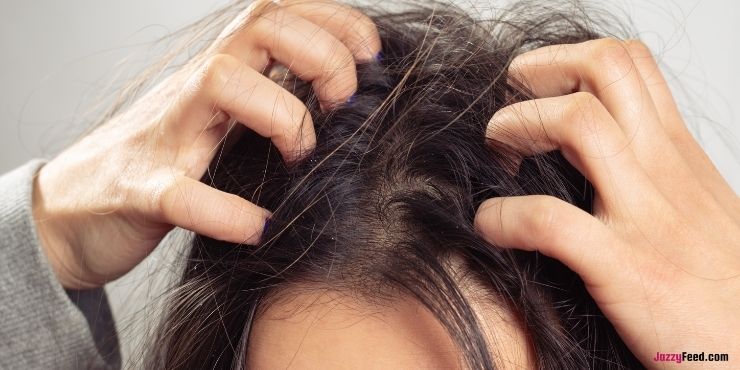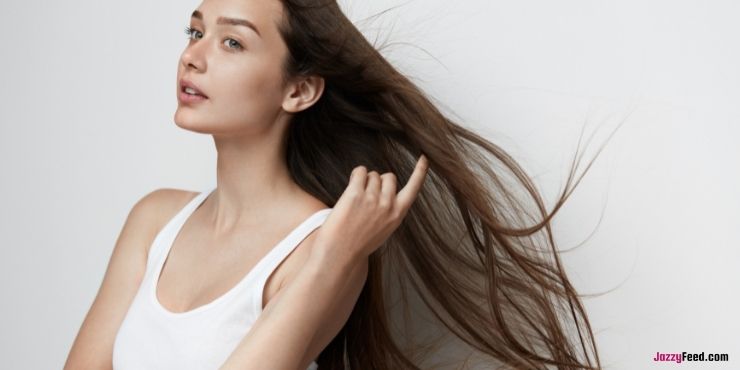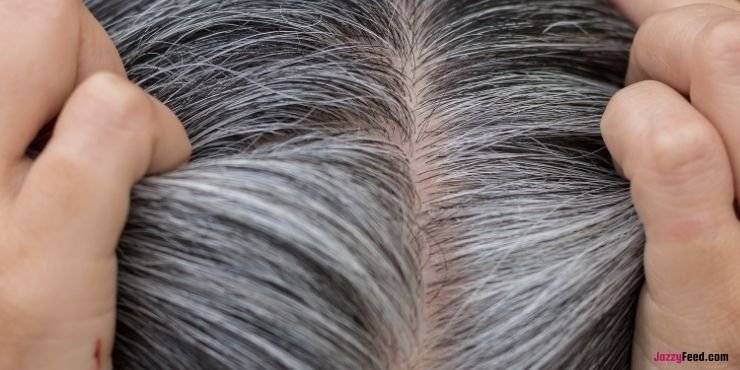In terms of nutritional value, they are far superior to most other cereals, grains, and vegetables. However, they extend beyond food and diet. Many hair care enthusiasts use them in masks, gels, packs, and salves to make their tresses healthier and more vibrant. Chia seed oil is also gaining popularity as a natural hair emollient.
Chia seeds are high in fibre, omega-3 fatty acids, protein, phosphorous, and calcium, all of which contribute to stronger and healthier hair, skin, and body.
Did you know that the Mayan word for “strength” is chia? And with good reason. Including chia seeds in your daily diet can be both easy and beneficial. They are easily accessible (available at your local grocery and health food store), reasonably priced, and complement a variety of ingredients without overpowering them in flavor or texture. These seeds, which are native to Mexico and Guatemala, are high in fiber, omega-3 fatty acids, protein, phosphorous, and calcium, all of which contribute to stronger and healthier hair, body, and skin. To learn how chia seeds can be used to grow hair and the benefits they offer, continue reading.
What are Chia Seeds?

Chia seeds are the tiny white, dark brown, or black seeds of the Salvia hispanica plant, which is a member of the mint family. They have a smooth and glossy texture and a flat and ovular structure. Chia seeds, which are native to Mexico and Guatemala, were traditionally used by the Aztecs and Mayans. However, due to their high nutritional value and versatility, they are gaining popularity around the world. Chia seeds contain a high concentration of omega-3 fatty acids, fibers, proteins, antioxidants, and minerals, making them a superfood that not only benefits our internal health but also improves our appearance. Chia seeds absorb liquid and form a gel-like substance, which can be used as an egg substitute or a natural thickener. Soaked chia seeds can also be added to porridge, pudding, baked goods, salads, yogurt, and smoothies. They are absorbed by the body as whole-grain, unprocessed food items.
What are Nutritional Value of Chia Seeds?
The nutritional profile of chia seeds is as follows:
- The seeds are high in essential fatty acids, which cannot be synthesised in the body and must be obtained through diet. Almost 75% of these fats are omega-3 alpha-linolenic acid (ALA), with the remaining 20% being omega-6 fatty acids.
- Chia seeds, like other seeds, are high in high-quality plant-based proteins. They have a protein content of nearly 19%, which is higher than that of most other cereals and grains. In fact, chia seeds contain all nine essential amino acids.
- Consuming chia seeds may provide you with a significant portion of your recommended daily fibre intake. It has been discovered that insoluble fibres account for nearly 80% of its carbohydrate content.
- The seeds are high in minerals such as manganese, phosphorus, zinc, copper, selenium, magnesium, calcium, iron, and others. Chia seeds, on the other hand, have a limited vitamin content, containing only vitamins A, B, and C.
- Chia seeds also contain a variety of beneficial plant compounds such as antioxidants such as chlorogenic acid, caffeic acid, quercetin, kaempferol, and others. The amount of antioxidants found in these seeds is greater than that found in cranberries.
- Chia seeds have a low calorie count of 138 per ounce.
- They are completely gluten-free.
How Do Chia Seeds Help Hair Growth?
Now, here’s how chia seeds improve the health and appearance of our hair:
- Our hair is primarily composed of a protein known as keratin. Consuming protein-rich chia seeds aids in the restoration of hair protein, making the mane look healthier, thicker, and stronger.
- Copper and zinc are two minerals found in chia seeds that are extremely important for hair health. Copper aids in the prevention of hair thinning, while zinc aids in the repair of damage and the prevention of scalp infections.
- It has been discovered that men and women who are deficient in omega-3 fatty acids experience more hair loss than those who are not deficient. The essential fatty acids stimulate hair follicles, causing hair to grow. Chia seeds, which are high in omega-3 fatty acids, may help to control hair loss by compensating for this deficiency. It also contributes to the lustre and shine of the hair.
- One of the most common causes of hair loss in women is iron deficiency. Consuming chia seeds may help to restore iron levels in the body, promoting better blood circulation throughout the scalp and encouraging hair growth.
- The seeds promote better sleep, which is necessary for stress relief. When you are stress-free, you can naturally say goodbye to a variety of hair problems.
- Chia seed gel, when soaked in water for an extended period of time, can effectively hydrate dry and frizzy hair, promoting hair growth.

Reasons Chia Seeds Are Good For Your Hair
May Condition Dry Scalp
Omega-3 fatty acids are abundant in chia seeds. The skin (or scalp) is hydrated and the barrier function is improved. Chia seed oil may help treat dandruff when applied with a carrier oil to a dry scalp.

May Boost Hair Growth
Protein is abundant in these seeds. Additionally, they have anti-inflammatory properties. Inflammation may be fought with the seeds.

May Improve Hair Texture
Chia seeds contain a higher amount of calcium, phosphorus, and magnesium than most other grains. Additionally, they have a higher concentration of iron, selenium, copper, and zinc. Hair texture is attributed to these minerals. Hair shine may also be enhanced by chia seeds.
Chia seeds have a number of anecdotal benefits for hair. Although more research is needed in this regard, the use of chia seeds for hair growth seems to be effective.

Delays hair from greying
Chia seeds contain copper, which aids in the prevention of grey hair. Copper inhibits the production of melanin, which is known to restore your hair’s natural colour and delay greying.
Chia seeds can be consumed with water or added to juices, salads, and smoothies. Consume it on a daily basis to see results.

How to Use Chia Seeds for Hair Growth?
Ingesting chia seeds is the best way to get the maximum benefits from them for your hair. However, you can also use them in your DIY beauty treatments. We tell you about various ways in which you can use the seeds to get great hair:
By Consuming Chia Seeds
- A teaspoon of chia seeds can be added to a glass of water or lemonade. Allow 10 minutes for them to swell. Drink the mixture as soon as possible.
- Chia seeds can be ground into a fine powder and added to puddings or baked goods.
- Every morning, sprinkle some seeds on your breakfast cereal.
- Use 2 teaspoons of chia seed gel in your favourite smoothie every day and you’ll never have to complain about dull hair again.

By Applying Chia Seeds to Hair
- 2 teaspoons chia seeds in a cup of water Allow it to sit for 10 minutes, or until the seeds swell. Now, add a teaspoon of lemon juice and thoroughly mix it in. Rinse your hair with this concoction to strengthen and shine it.
- 1 teaspoon chia seeds soaked in 1/4 cup almond milk or coconut milk Allow for a 10-minute rest. Apply it all over the scalp as a mask once it has hardened into a gel-like mass. Wait 10 minutes before rinsing with a gentle shampoo. The mask will prevent hair loss and improve the health of your hair.
- To treat dry and damaged hair, make a hydrating hair mask with Chia seed oil. Chia seed oil should be mixed with 2 egg whites and a small amount of yoghurt. Apply it to your scalp and hair and leave it on for 40-45 minutes. Wash it away with lukewarm water and a gentle shampoo. This mask will moisturise your hair and make it shiny and strong.
- To your soaked chia seed mixture, add 1/3 cup apple cider vinegar and 2 tablespoons organic honey. Allow it to sit on your hair for 30 minutes before washing it out with a gentle shampoo. This concoction will strengthen and shine your hair.

How to Include Chia Seeds in a Meal?
- For a refreshing, nutritious morning snack, combine 1/4 cup chia seeds with Greek yoghurt and top with fresh strawberries and blueberries.
- Sprinkle some chia seeds on top of some peanut butter-smeared toast.
- Chia seeds can be blended into a midday smoothie or added to juice.
- Add a handful of flax, hemp, and chia seeds to your oatmeal.
- 1/4 cup chia seeds should be added to your homemade granola bar recipe.
chia seed pudding
Celebrity chef and food network host Giada De Laurentiis shared this recipe of Chia Seed Pudding.
- In a medium mixing bowl, whisk together the almond milk, yoghurt, 2 tablespoons maple syrup, vanilla, and 1/8 teaspoon salt until just combined.
- Stir in the chia seeds and set aside for 30 minutes. If the seeds have settled, give them a good stir to distribute them.
- Refrigerate overnight, covered.
- Toss the berries with the remaining 4 teaspoons maple syrup in a medium bowl the next day.
- Add the almonds and mix well.
- Spoon the pudding into four bowls or glasses; top with the berry mixture and serve.
DIY Chia Seeds Hair Mask
Aside from consuming them, a DIY hair mask can help add shine and gloss to tired tresses; they work as a deep conditioning mask by mimicking the effects of protein treatments.
- In a glass bowl, combine 6 tablespoons organic coconut oil, 2 tablespoons apple cider vinegar, 1/4 cup organic honey, and 1 teaspoon chia seeds.
- Microwave the mixture bowl for 30 seconds, then remove it and set it aside to cool.
- Dampen your hair, then apply the mixture to it and leave it on for 5-10 minutes.
- To complete the routine, rinse with water, shampoo, and apply conditioner.
- Allow your hair to air dry for the best results.
Conclusion
Chia seeds are rich in essential fats, proteins, amino acids, and minerals for hair growth and maintenance. Research is needed to understand the benefits of chia seeds for hair, but anecdotal evidence suggests they may be beneficial. We’ve provided simple recipes for making chia seeds into hair masks and gels. Regular use will make your hair shinier and healthier.
FAQs
Do chia seeds make your hair grow?
Chia seeds contain 23% protein and are ideal for thickening and growing your strands when infused in a mask. Chia seeds are high in copper, zinc, and iron, in addition to amino acids. And iron aids in the retention of the hair’s base in the scalp. Chia seeds aid in the delivery of oxygen to your scalp, resulting in increased hair growth and strength.
How long does it take for chia seeds to work?
Chia seed gelling takes time! Recipes like chia pudding benefit from soaking the chia in liquid for several hours, if not overnight. If you want your chia seeds to have a gel-like consistency, let them soak in the liquid for at least 20 minutes.
What do chia seeds look and taste like?
Chia seeds are a mixture of tiny black and white seeds that have almost no odor or flavor. Chia seeds can feel gritty or grainy when consumed in large quantities. When chia seeds are wet, a gelatinous coating forms.
The benefits of Chia Seeds?
- Phosphorus, a popular ingredient thought to promote hair growth, is abundant in chia seeds.
- L-lysine, a protein building block, is known to promote hair growth, and chia seeds are high in this.
- The seeds contain 9 essential amino acids that are associated with stronger hair, skin, and nails.
- According to UK-based nutritional therapist Vicki Edgson, Omega 6 LA is a protein with four times the antioxidant power of blueberries.
- A serving of chia seeds provides five times the amount of elasticity to curls and stronger teeth and nails when compared to one glass of milk.
- Chia seeds slow the rate at which carbohydrates and other foods are converted into sugar. This helps to keep your blood sugar levels stable, which is ideal for diabetics.
- According to Maron McGovern, a fitness and weight management specialist, the fibre content of chia seeds is a significant benefit. One serving corresponds to one-third of the daily allowance for proper digestion and weight control.
- By converting to DHA, the fatty acid Omega 3 ALA improves brain function (depending on how your body responds—everyone is different).
- Chia seeds, when mixed with water, can give you the illusion of feeling full, which can help you avoid weight gain.
What are the Adverse Effects of Chia Seeds?
Chia seeds have no known negative side effects. However, excessive consumption can cause gastrointestinal issues such as bloating, constipation, and diarrhea. As a result, start with a small amount and gradually increase it as your stomach adjusts. Also, consult your doctor before beginning a chia seeds diet, especially if you are pregnant, nursing, or taking blood-thinning medications.
How Much Chia Seeds Should You Eat aDay?
1(1/2) tablespoon or 20 grammes of chia seeds twice a day is the recommended daily dose.
Can Chia Seeds Get Stuck in Your Intestines?
Dry, whole chia seeds can become lodged in your intestinal lining, causing discomfort and bloating. As a result, it is always recommended to use well-soaked chia seeds.
Do You Need to Refrigerate Chia Seeds?
Chia seeds can be refrigerated to extend their shelf life. It also keeps their volatile oils from becoming rancid or becoming oxidised.
Is flax better than chia seeds?
As you can see, both seeds have a good amount of protein and omega-3 fats, with flax seeds having a slight advantage in these two nutrients. Flax seeds also have significantly higher levels of manganese, copper, and potassium. Chia seeds have fewer calories and more fiber than other seeds.
Who should avoid chia seeds?
Because chia seeds are in the mint family, people who are allergic to mint, sesame, or mustard seeds should avoid them. Vomiting, diarrhoea, itching of the lips or tongue, and anaphylaxis are all examples of food allergy symptoms.

